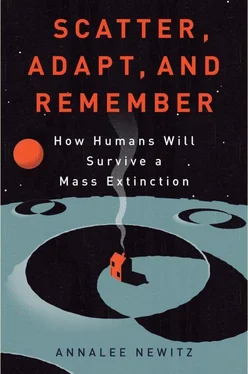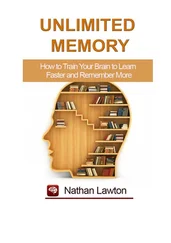Most people who are serious about defending Earth from PHOs don’t talk about blowing things up. As Mainzer explained with the 8-bit game Asteroids, the problem is that asteroids tend to break down into smaller asteroids. Nuking an incoming object might not do much more than shower our planet with dozens of burning chunks rather than one big one. The damage would be roughly the same. The reason Mainzer’s data-gathering is so crucial is that the further away an asteroid is when we spot it, the easier it will be to nudge it out of the way. That’s right—our best bet is to nudge it. “Blowing up asteroids may be fun, but an Aikido move would be better,” Mainzer said, only half joking. “Having time gives you the ability to move its trajectory without a lot of energy.”
The question of how to finesse this Aikido move in space has been the longtime concern of a loose coalition of scientists, policy-makers, and government representatives associated with the Center for Orbital and Reentry Debris Studies. Run by aerospace engineer William Ailor, the Center has developed a series of suggestions over the past 15 years for how we’d deal with asteroid threats. An affable man with tidy gray hair and a touch of the South in his speech, Ailor sketched out how he thought an impact scenario might unfold. “Anyone can find these things,” he said. “There are amateur astronomers all over, as well as more formal programs in space agencies. Most likely, it would be spotted by that community.” If it’s a smaller object, we might have very little time to prepare. “People like to think we’ll have twenty years, but we might only have a few years.”
The next big hurdle wouldn’t be the question of how to divert the asteroid, though. Say, for example, Mainzer’s NEOCam is in orbit and her team spots an object bigger than 1 km that has a 1-in-50 probability of smashing into the Earth. “Should we spend money on that now?” Ailor asked. “Given the fact that it takes you years to build a new payload and fly a mission out to do something, you may have to start spending money before you’re certain it’s going to hit. And that’s the challenge for decision-makers.” The problem is that every PHO is a probability… until it isn’t. And the time to act decisively to push an incoming object out of the way is almost inevitably going to be long before we can establish that a collision is a certainty. Meanwhile, as the object hurtles closer to us in space, the less likely it is that we’ll be able to gently nudge it into a new orbit, out of our way.
So who would have to step up and push the world to launch anti-PHO spacecraft? The U.N. Committee on the Peaceful Uses of Outer Space has a group called Action Team-14 that deals with NEOs, and would likely be the first agency to coordinate Earth’s defense in this situation. Provided they can get buy-in from countries and corporations with the means to build spacecraft for the mission—and that’s a big if—the group would have to decide exactly what method of PHO deterrence would work best. Ailor’s company, the Aerospace Corporation, did a study in 2004 on what would be required to take a 200-meter object from a 1-in-100 probability of hitting Earth to 1 in 1,000,000. “You have to launch quite a few spacecraft,” Ailor said. “There’s a misconception that you would send up just one vehicle.” Redundancy would be crucial, in case one of the crafts fails—and besides, some techniques for moving the object require multiple spacecraft to work. Also, despite what we saw in the asteroid-nuking flick Armageddon, the vehicle would be a remote-controlled robotic craft. “If a human can get there, it’s way too close,” Ailor asserted.
If we have enough time, we’d want to try what Ailor called slow-push techniques. One would involve using a swarm of small spacecraft equipped with lasers designed to boil material off the surface of the object. As the PHO spat pieces of itself into space, enough thrust would be generated to gently move it out of its deadly path toward Earth. Another possibility would be to create a “gravity tractor” with one or more spacecraft. Parking bulky objects like other asteroids or big spacecraft near the distant object might generate enough gravitational pull to move it just enough. Many years later, this small perturbation would elegantly divert its course into a completely harmless orbit. Both of these techniques are untested. But as more spacecraft venture to NEOs and the asteroid belt over the next decade, we’re likely to see experiments to test whether these techniques could, in fact, jar a large object out of its current orbit.

In this image by Ron Miller, we see a probe pushing an NEO out of Earth’s path. (illustration credit ill.18)
What if the asteroid were heading toward us today, and we hadn’t had a chance to test the slow-push systems? “We don’t have anything off the shelf other than a kinetic impactor,” Ailor said casually, as if he were talking about computer parts. A kinetic impactor is “basically hitting it with a rock,” he explained. We’ve already tried this method on a comet with NASA’s Deep Impact mission, when a probe hit the Tempel 1 comet with a giant copper slug, dislodging huge amounts of dust and ice. Tempel 1’s orbit was perturbed slightly. So we know for certain that if we hit an incoming object with slugs or rocks, we have a good chance of redirecting it. “If you have one that gets too close or is bigger, you might have to use a nuke to move it,” Ailor conceded. That’s a last resort, and also untested.
The problem is that even our “off the shelf” kinetic-impactor solution would be tough. “You’d have to pull a craft together, grab the right kind of payload to do what you wanted, and find a launch pad,” Ailor said, seeming to be mentally ticking off a list he’d pondered many times. On top of that, there would be the issue of how to inform the public without causing either mass panic or denial. It’s easy to imagine people voting against an expensive anti-PHO program if there were only a 1-in-500 chance of mass extinction. Still, it’s possible we might band together as a civilization to deal with this existential threat, and fail anyway. As Ailor put it, “Of course, you might miss.”
In the Event of Fallen Civilization, Please Open This File
If we’re facing an impact that’s a 10 on the Torino scale—that is, from an asteroid comparable to the one that hit at the K-T—we are certainly facing a mass extinction. The world would be wrapped in fires, and cities would be shaken by quakes, broiled by volcanic eruptions, and flooded by tsunami waters. Over the long term, the climate would be transformed by aerosols thrown into the stratosphere. How would we survive?
Initially, our survival would depend on retreating to the kinds of underground cities we discussed in chapter 17. The immediate aftereffects of the hit would be similar to a massive nuclear war, minus the radioactive fallout. Underground, we would be relatively safe from the worst of the firestorms and other disasters. Aboveground, temperatures and fires would die down relatively quickly. Within weeks, we’d be able to poke our heads back up and see the roiling clouds of dust that had replaced our sky. And that’s when our real troubles would begin. We’d likely suffer through something like a nuclear winter. Alan Robock, the atmospheric scientist who warned against solar-management geoengineering with particles in the stratosphere, was among the first scientists to suggest that supermassive explosions would result in planetary cooling. And the cold would likely intensify for several years. In an early paper about nuclear winter, Robock outlines a scenario that sounds like a mild icehouse. The first year after the explosion—in this case, an asteroid strike—we’d see a global buildup of ice and snow and lowering of temperatures by about two degrees. But as the cold deepened, the planet’s snowy surface would reflect even more light—creating a runaway effect that would cool us down possibly as much as 15 or 16 degrees in the following several years.
Читать дальше







![Аннали Ньюиц - Автономность [litres]](/books/424681/annali-nyuic-avtonomnost-litres-thumb.webp)





